The best photos from defensive end Lee Roy Selmon's career with the Buccaneers.
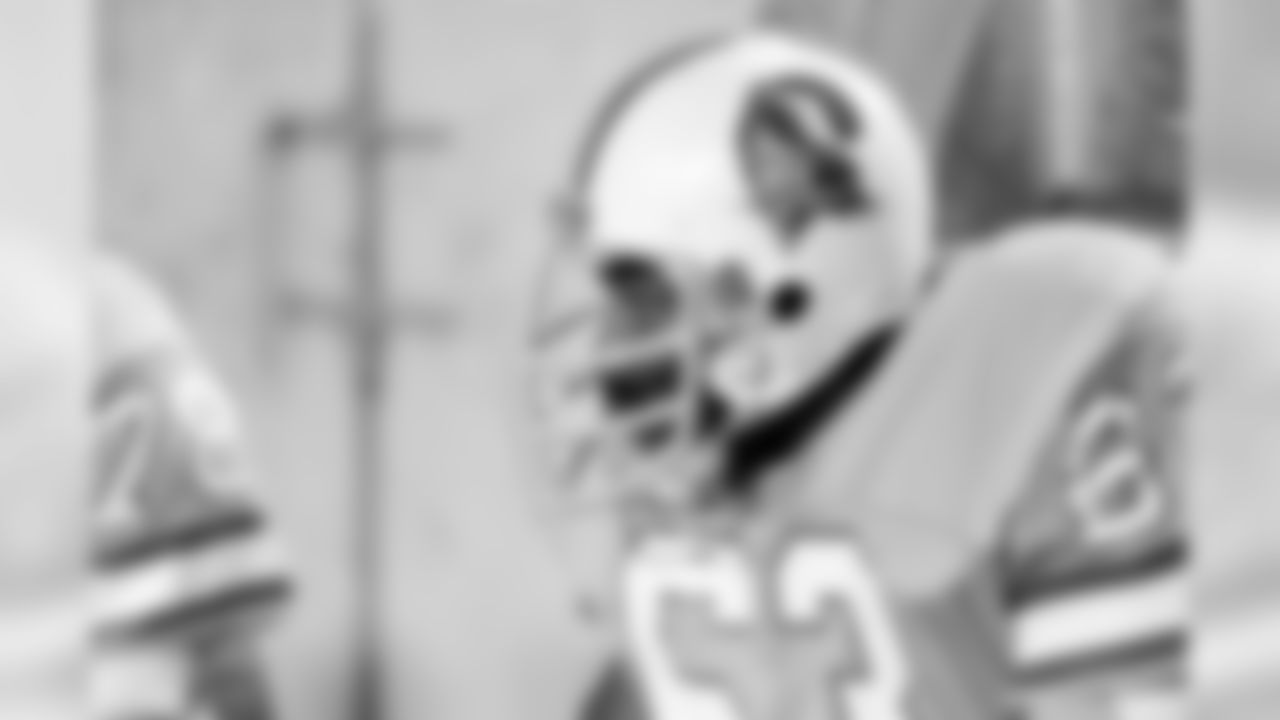
DE Lee Roy Selmon #63 of the Tampa Bay Buccaneers during the preseason game against the Baltimore Colts at Tampa Stadium on September 10, 1977 in Tampa, Florida

DE Lee Roy Selmon #63 of the Tampa Bay Buccaneers in action against the Minnesota Vikings at Tampa Stadium on October 7, 1984 in Tampa, Florida.

DE Lee Roy Selmon #63 of the Tampa Bay Buccaneers rushes the quarterback during the game against the New Orleans Saints on Sunday, October 14, 1979 at Tampa Stadium in Tampa, Florida.

DE Lee Roy Selmon #63 of the Tampa Bay Buccaneers rushes the quarterback against the Minnesota Vikings at Tampa Stadium on September 5, 1981 in Tampa, Florida.
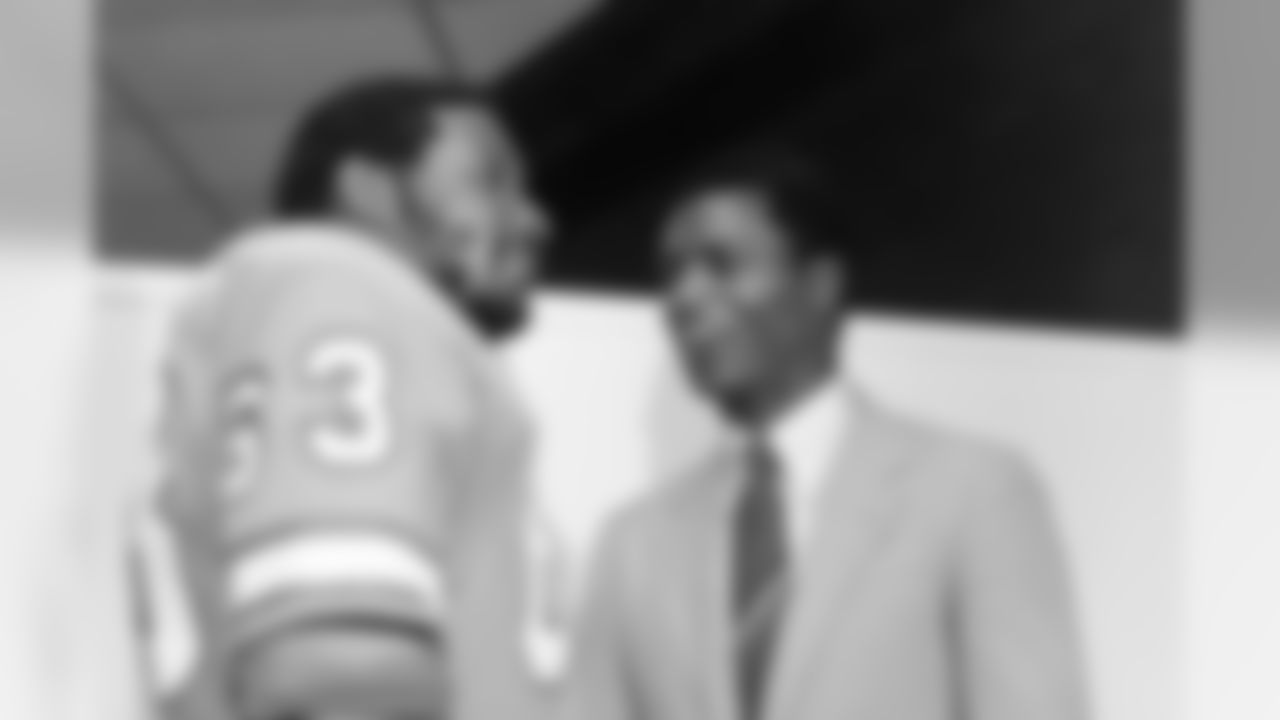
DE Lee Roy Selmon #63 of the Tampa Bay Buccaneers during the NFC Divisional Playoff game against the Philadelphia Eagles at Tampa Stadium on December 29, 1979 in Tampa, Florida.

Defensive end Lee Roy Selmon #63 of the Tampa Bay Buccaneers looks to block during the game against the Minnesota Vikings at Tampa Stadium on November 25, 1979 in Tampa, Florida.
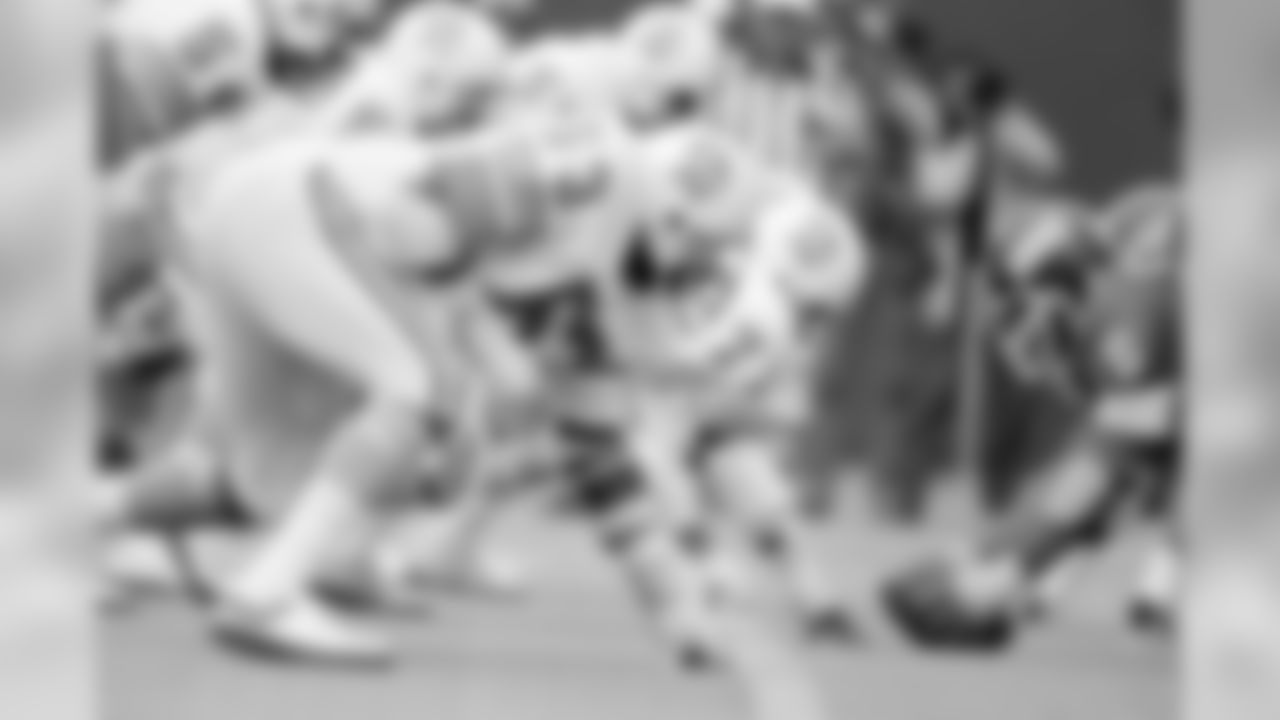
Defensive end Lee Roy Selmon #63 of the Tampa Bay Buccaneers lines up against the New York Giants at Giants Stadium on October 7, 1979 in East Rutherford, New Jersey.

DE Lee Roy Selmon #63 of the Tampa Bay Buccaneers tackles against the Cincinnati Bengals at Tampa Stadium on September 25, 1983 in Tampa, Florida.

DE Lee Roy Selmon #63 of the Tampa Bay Buccaneers looks to tackle against the Chicago Bears at Tampa Stadium on December 2, 1979 in Tampa, Florida.

DE Lee Roy Selmon #63 of the Tampa Bay Buccaneers during the preseason game against the Miami Dolphins on Saturday, August 11, 1979 at Tampa Stadium in Tampa, Florida.

DE Lee Roy Selmon #63 of the Tampa Bay Buccaneers receives an award during the game against the Atlanta Falcons at Tampa Stadium on December 6, 1981 in Tampa, Florida.
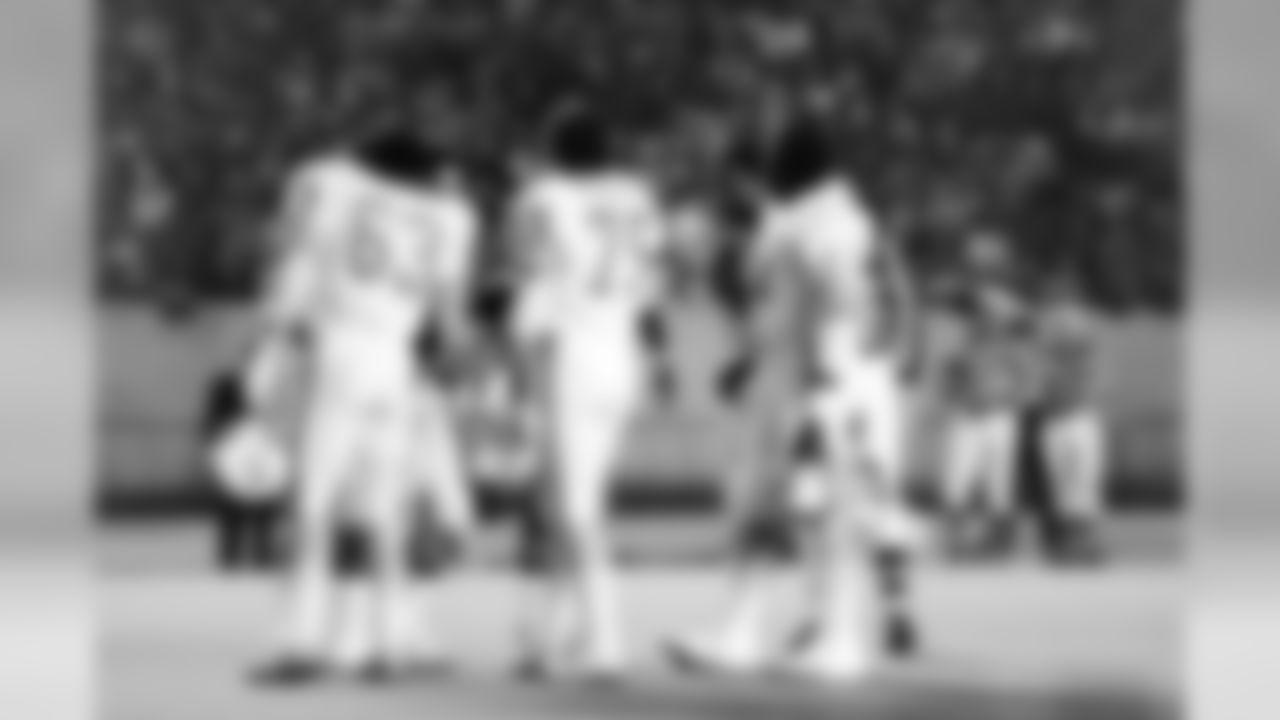
DE Lee Roy Selmon #63, OT Dave Reavis #75, RB Ricky Bell #42, and Linebacker David Lewis #57 of the Tampa Bay Buccaneers after a play against the Chicago Bears at Soldier Field on October 6, 1980 in Chicago, Illinois.
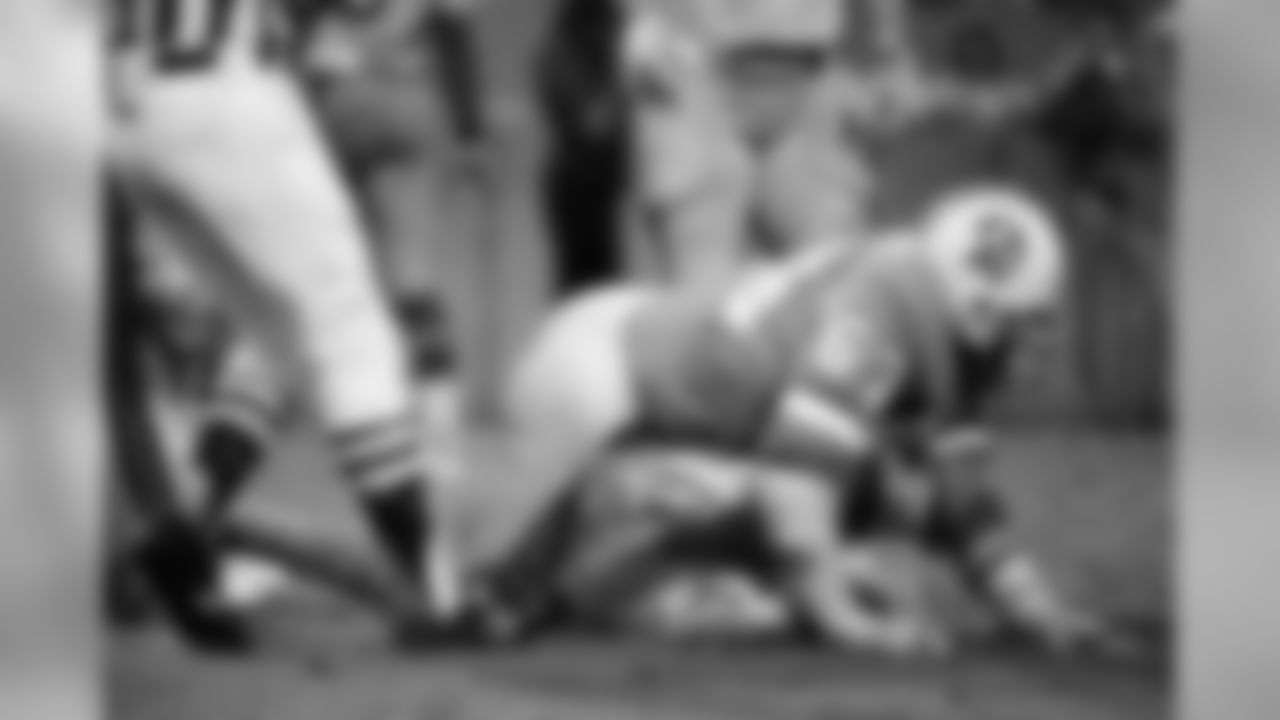
DE Lee Roy Selmon #63 of the Tampa Bay Buccaneers makes a tackle during the game against the Los Angeles Rams on Sunday, September 23, 1979 at Tampa Stadium in Tampa, Florida.

DE Lee Roy Selmon #63 and Linebacker Richard Wood #54 of the Tampa Bay Buccaneers in action during the preseason game against the Miami Dolphins on Saturday, August 11, 1979 at Tampa Stadium in Tampa, Florida.
Forty years ago to the day, on April 8, 1976, the Tampa Bay Buccaneers faced their first truly enormous team-building decision.
Sure, the fledgling franchise had chosen a nickname, signed a 30-year stadium lease and made the all-important hire of inaugural Head Coach John McKay. From the standpoint of the product they would put on the field, however, this is where it would all begin: The first pick in the 1976 NFL Draft.
The Buccaneers and Seattle Seahawks would begin play as the NFL's 27th and 28th franchises in '76. Expansion teams in that era were afforded few advantages; free agency was still nearly two decades away and dynasties like Pittsburgh and Dallas ruled the landscape. Tampa Bay and Seattle began forming their rosters through a "veteran allocation draft" in late March that offered little real value. The only good news for the Buccaneers was that Seattle had the first pick in that draft because Tampa Bay had won the first pick in the collegiate draft in a drawing the previous December.
The Buccaneers picked up 39 players in that allocation draft and signed some other free agents along the way but really did not have the foundation of a competitive team yet – as 26 straight losses in 1976-77 would eventually attest. They needed the draft to provide that foundation. However, there is one NFL reality that was as true in 1976 as it is now: There are no sure things in the draft.
Lee Roy Selmon sure seemed like one. He was an All-American on a hugely successful Oklahoma team, and he had won both the Lombardi and Outland Trophies in 1975. He was a man of impeccable character, as must have been obvious in pre-draft meetings and would eventually make him a legend in the Bay area community. Once McKay decided that he wanted to emphasize defense in the building of his expansion team, Selmon was the obvious choice for General Manager Ron Wolf.
Seattle picked defensive tackle Steve Niehaus with the second selection; he played four seasons in the NFL and started 20 games for the Seahawks. The Saints and Browns found a pair of outstanding running backs at #3 and #7 with Chuck Muncie and Mike Pruitt, respectively. The Patriots got cornerback Mike Haynes at #5, and he would end up in the Hall of Fame. Three other eventual Hall-of-Famers would be drafted in the third and fourth rounds; the Seahawks even found one of their own with wide receiver Steve Largent at pick #117. (The other two were tackle Jackie Slater and linebacker Henry Carson.)
But no franchise has ever nailed its very first college draft pick so thoroughly.
Lee Roy Selmon was inducted into the Pro Football Hall of Fame in 1995, becoming the Buccaneers' first representative in Canton. He was on the field for the franchise's very first game and never played a down for another team.
MAILBAG: RETURNS AND TAKEOFFS
The Boston Patriots, part of the new AFL in 1960, drafted future Hall-of-Famer Ron Mix with what was technically the first pick of the NFL Draft, but traded him to San Diego, where he played most of his career. In the very first NFL Draft, in 1976, the Chicago Bears made tackle Ron Stydahar their first pick and he ended up in Canton as well. Of course, the Bears were one of the NFL's founding franchises in 1920 (as the Decatur Staleys) and were obviously well-established, with three championships already under their belts. The San Francisco 49ers' first NFL Draft pick, in 1950, was future Hall-of-Fame defensive tackle Leo Nomellini, who did indeed play his entire career for the Niners. However, San Francisco had already played four seasons in the AAFL before joining the NFL in '50. Recent Hall of Fame inductee Jonathan Ogden is technically the first draft pick ever for the Baltimore Ravens, but that team was already well-established, having moved from Cleveland but taking on "expansion" status so the Browns' name and colors could stay in their original home. The Oakland Raiders drafted Hall-of-Fame center Jim Otto in the first round of the 1960 NFL Draft, but they had already drafted a large number of players in the AFL draft the previous fall. Hall-of-Fame member Bob Lilly was the Dallas Cowboys' first draft pick, in 1961, but the Cowboys had already played a season in the league after joining too late to take part in the 1960 draft.
In other words, the Buccaneers' experience with Selmon is unique to NFL history. He is arguably the greatest player in franchise history – though fellow Canton residents Derrick Brooks and Warren Sapp probably make that a three-way tie – and his impact on the Tampa Bay area was felt much farther than the gridiron and for many, many years after his retirement in 1985. The NFL's 27th franchise could not possibly have hoped to do as well with its first collegiate draft pick as it did.
Selmon missed roughly half of his rookie season due to injury but was still named the team's most valuable player. Healthy in 1977, he instantly became a league-wide star, racking up 110 tackles, 13 sacks and five forced fumbles. He was both respected and feared by Buccaneer foes. Chicago Bears' offensive tackle Ted Albrecht famously said, "At halftime I told the coach my deepest secrets. I said I never wanted to be buried at sea. I never wanted to get hit in the mouth with a hockey puck. And I didn't want to go out and play that second half against Lee Roy Selmon."
Selmon had 11 more sacks in both 1978 and 1979. When his efforts led the Bucs to a shocking division title in '79, he was voted into his first Pro Bowl. He would play in the next five all-star games, too; in fact, the Pro Bowl following the 1984 campaign was his last game as a pro. Though the sack did not become an official NFL statistic until 1982, it was still tracked in Selmon's early years and he would rack up 78.5 of them in just nine seasons. He also recorded 742 tackles, 10 fumble recoveries and an incredible 28.5 forced fumbles.
Selmon was the first Buccaneer to win a major individual award, taking home NFL Defensive Player of the Year honors in 1979. He was the first Buccaneer – and for more than two decades the only Buccaneer – to have his jersey number (63) retired. The NFLPA named Selmon the league's defensive lineman of the year four times.
After his retirement, Selmon sat on the Tampa Sports Authority board and later served as the Athletic Director at University of South Florida, helping form the school's first football program. A restaurant chain bears his name, as does a major Bay area highway. When a stroke took his life at the age of 56 in 2011, an entire city mourned.
"He wasn't from the area," said Rich McKay, John's son and the Bucs' general manager for years. "He didn't play at Miami or Florida. He was from Oklahoma and he came to Tampa and played nine years and they named an expressway after him. That's all you need to know about Lee Roy Selmon."
The Bucs believed they knew all they needed to know about Selmon prior to the 1976 draft, when they would make a decision bound to shape the expansion franchise for years. And they were right. Exactly 40 years ago, the Tampa Bay Buccaneers chose Lee Roy Selmon first overall in the 1976 NFL Draft, making him their first collegiate selection ever. It may be the best decision the franchise has ever made.
























